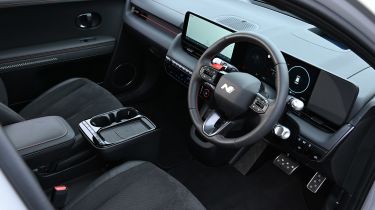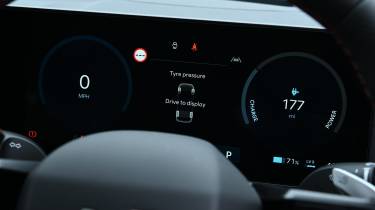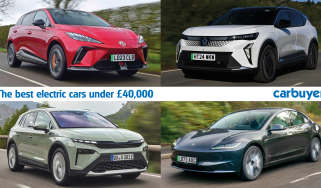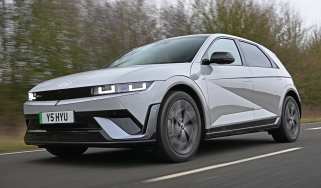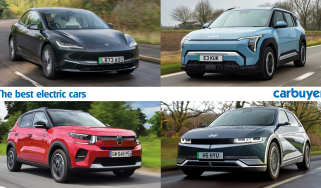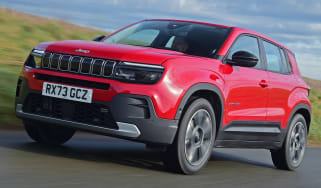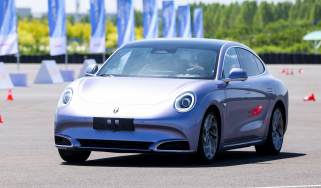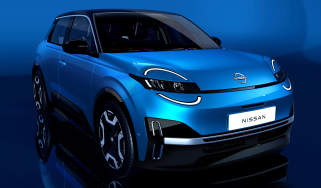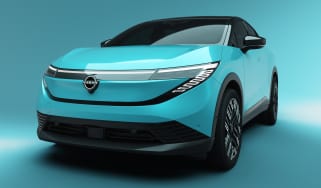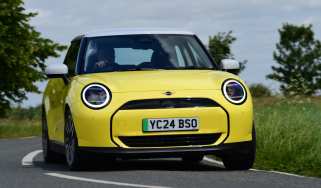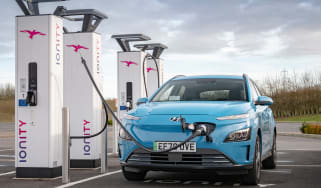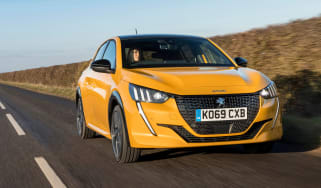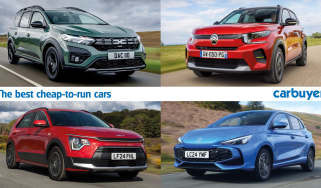Hyundai Ioniq 5 review – Interior & comfort
The Ioniq 5’s interior feels airy and modern, with plenty of standard kit
The Ioniq 5 looks refreshingly different from the outside and its clean, uncluttered design language continues when you get in. It's quite unlike anything we’ve seen from Hyundai, instead looking more like a concept car from just a few years ago. A Nissan Ariya may feel a bit more premium, but the Ioniq 5’s cabin still matches the Toyota bZ4X for quality, while looking more daring than that of the Volkswagen ID.4 – especially thanks to the standard-fit 64-colour ambient lighting.
The seats are squishy but still offer decent support, making them comfortable in a wide variety of situations. That even includes taking a nap, as the front seats can recline to an almost flat position. One point to note is that the pre-facelift Ioniq 5 had no rear wiper, so visibility out of the rear windscreen could quickly become restricted in the winter. Luckily this was rectified with the 2025 update.
Hyundai Ioniq 5 infotainment and navigation
All Ioniq 5s come fitted with dual 12.3-inch screens, which used to have a white border, but now get a dark-coloured frame. The menu system itself is easy to use, with big icons and a logical layout, and the built-in navigation offers quick responses, and it was updated to the latest software as part of Hyundai’s most recent round of tweaks. Apple CarPlay and Android Auto are also available, and these fill out the screen better than the Renault Scenic’s system, courtesy of the landscape layout of the touchscreen. Wireless phone charging is via a pad on the centre console, plus there are plenty of USB sockets, too. A ‘Sounds of Nature’ feature plays relaxing ambient sounds, while ‘Quiet Mode’ turns off the rear speakers so as not to disturb a child sleeping in the back.
The second display takes the form of a set of digital instruments, something the rival Tesla Model Y is sorely missing. These are clear and easy to read and can be configured to display a variety of information such as your current range and sat nav directions – although you can’t get a secondary view of the map like in Audi’s Virtual Cockpit.
More reviews
What is impressive, however, is Hyundai’s integration of its driver assistance functions into the dials; for cars fitted with blind-spot cameras, a video feed is displayed in the instrument panel when you indicate to change lanes. It also shows you when you’ve changed the wiper and light settings, which is a handy feature.
Equipment
Five trims are available: Advance, Premium, N Line, Ultimate and the top N Line S. We’d recommend sticking with the Premium model as this has all the equipment you’ll ever need including the aforementioned 12.3-inch infotainment display with sat nav, digital instruments, wireless phone charging, blind spot monitoring, lane-keep assist, adaptive cruise control and a rear-view camera. This list doesn’t stop there, however, as Premium cars also get 19-inch alloy wheels, part-leather upholstery, heated front seats, a heated steering wheel, LED projector headlights, and a powered bootlid. 'V2L' (vehicle-to-load) comes as standard, too, which makes it possible to use the car's electricity to power external devices and even recharge other electric cars.
Available exclusively with the 84kWh battery, the Ultimate version adds 20-inch alloy wheels, full leather upholstery, a ventilation function for the front seats, heated rear seats, a Bose stereo system (with a subwoofer under the boot floor) and a head-up display.
The aforementioned N Line trim gets different front and rear bumpers, unique side skirts and 20-inch alloy wheels, along with extra gloss-black trim. Inside, there’s a set of sports seats, a three-spoke steering wheel with a driving mode button similar to the ‘N’ and lots of red accents and contrasting stitching.
Ironic as it may be, the Ultimate model isn’t actually the ‘ultimate’ Ioniq 5. This honour instead goes to the N Line S version, which looks similar to the N Line but gets upgrades including a 360-degree camera system with blind spot cameras and tinted rear glass, electric sliding rear seats and exclusive N Line Alcantara and leather upholstery.
Options
For most of the trim levels it’s simply a case of picking the one you want and getting the included kit, with no real options to mix things up. The exception is the Ultimate trim, whereby you can option some of the extra kit fitted in the N Line S, presumably if you want all the extra toys but in a more subtle-looking package.

